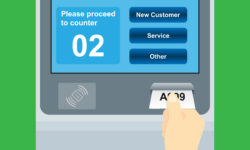2022 Security Vehicle Fleets Survey: Integrator Insights on GPS, Gas Prices, Dispatch Processes & More
For most security dealers and integrators, service vehicles are where the rubber hits the road to help drive business success. Find out how managers are steering clear of pandemic potholes to meet challenges head-on.

If ever security professionals have had to roll with the punches it has been the past two years given the pandemic and its myriad business implications. Continuing that forward momentum quite literally are the many thousands of work vehicles transporting intrepid technicians to and from their appointed installation and service destinations.
There is no doubt the role of the truck roll lies at the center of the vast majority of security, alarm and integration companies. Thus, being strategic and diligent about managing vehicle fleets, including those for sales and other purposes, is critical.
In particular, the pandemic’s impact on the supply chain and inflation is making it more challenging to acquire new vehicles and more costly to fuel them.
“Our primary near-term concern is the availability to purchase vehicles due to supply chain issues,” says SAGE Integration COO John Nemerofsky. “It has made it a lot harder to get replacement vehicles, so we have to order them a lot further in advance than usual,” adds Patrick Kilbourn of Stone Security.
Amherst Alarm CEO Tim Creenan contributes, “We have had three Ford vans on order since August 2021. The dealer doesn’t know when they will be built.” Meanwhile the pain at the pump appears to be pushing some managers toward embracing hybrid or electric models, even if SSI’s 2022 Security Vehicle Fleets Survey showed all the responding companies still fielding exclusively petroleum-powered work trucks.
“The conversion to electric vehicles will require a lot of thought to do it effectively, but it is too soon for that in our markets,” says Per Mar Security Services CEO Brian Duffy. “In the long-term future, I see the industry switching to electric fleets, which will force companies to invest highly in charging stations and new tech. They’ll also have to consider longer down time on longer trips,” contends LOUD Security Systems General Manager Eric Widner.
Provident Security CEO Mike Jagger adds, “This is the first year the tech vans we use will be available in electric models. We will be slowly converting our fleet to hybrid and electric vehicles depending on use.”
Those executives are among those offering further insights ahead regarding the current state of security vehicle fleets. They also share how they are deploying GPS capabilities, reducing truck dispatches to handle service needs more efficiently and effectively and leveraging company vehicles to brand their business throughout the communities it serves. Make sure to check out the slideshow for a glimpse at these integrators’ vehicles.
Incorporating GPS Capabilities
“We use Verizon Reveal Pro. It integrates with SedonaOffice and tracks arrival/departure times into the SedonaOffice module. We just recently upgraded the units so they now include dashcams. They send alerts when harsh driving and other events occur.” – Tim Creenan, Owner & CEO, Amherst Alarm
“Through our field service unit, SAGE benefits from the ability to monitor location, arrival time and departures time that we can apply to our KPIs to improve operational efficiencies and resource optimization.” — John Nemerofsky, COO, SAGE Integration
“We use a GPS offering that provides a host of information, allowing us to track location, identify the nearest technician to a site or event, and geofencing information. We push a combination of instant alerts, web portal and weekly/monthly reporting to help our team managers coach our drivers as well as maximize efficiency.” — Matt Cooper, V.P., Operations, ADT Commercial
“Our entire fleet is equipped with Verizon GPS systems. They include 4K video footage inside and outside the vehicles. Each vehicle is programmed to alert departure team leaders on things like maintenance reminders, excess speeding, hard brakes etc. We also use the data for actual onsite billing, dispatching and knowing where our fleet is at all times, which has improved our efficiencies tremendously.” — Taylor Sears, COO, Silent Guard
“We have a third party that installs and provides an online portal for us to track our vehicles. It also allows us to put in reminders for things like registration, oil changes and other maintenance.” — Patrick Kilbourn, Director of Marketing, Stone Security
“Mainly used for technician location in the field for scheduling purposes.” — Brian Schmidt, Schmidt Security Pro
“Every vehicle in our fleet has GPS enabled. It assists with scheduling as well as ensuring all drivers are following policy. In the event of accidents, the system has helped drivers by showing that they were driving properly.” — Mike Jagger, CEO, Provident Security
“For the past decade, LOUD has used GPS to verify vehicle location. This is specifically used to verify timesheets, customer billing and that vehicles are only used within normal operating hours or as permitted.” — Eric Widner, G.M., LOUD Security Systems
“This is useful for auditing payroll if we have suspicions, and routing service calls in a dynamic fashion.” — Brian Duffy, CEO, Per Mar Security Services
“Each vehicle is fitted with a GPS tracker that tracks location as well as other things like vehicle speed, harsh braking, crash detection, fuel usage, etc.” — Jonah Serie, V.P. – Field Operations Administration, Brinks Home
Managing Rising Gas Prices
“We do everything we can to consider travel time while scheduling whenever possible. Otherwise, while there is not much option, we have raised the price of services when necessary and added in trip charges where appropriate. Unfortunately, this simply passes the cost along to the customer.” — Eric Widner
“We spent over $50,000 in fuel costs for 2021, a significant increase from 2020. Efficient processes are important, something that we focus on weekly. It takes everyone buying into that concept. We try to instill a ‘never be content mentality, be better today than we were yesterday.’” — Taylor Sears
“Our bill has just been climbing higher and higher. We try to minimize the trips being made to jobsites, but unfortunately we just have to keep rolling forward despite the rising prices.” — Patrick Kilbourn
“New gasoline cards with brand specific discounts.” — Brian Schmidt
“All our response team vehicles are available in a hybrid model. Electric technology vans start arriving this year, finally.” — Mike Jagger
“We keep up with gas apps and work with our fleet teams to ensure we are identifying the cheapest gas for our technicians.” — Jonah Serie
“Aside from utilizing GPS data to maximize efficient fuel usage and purchasing fuel-efficient vehicles, we utilize a discounted national fleet card program and push drivers to tier 3 stations where possible.” — Matt Cooper

Strategies to Reduce Truck Rolls
“In the second half of 2021, we started implementing our dedicated Technical Services Group resources as the first step in managing service requests from customers with an extended service plan. This allows our technical experts to more readily resolve customers’ issues virtually prior to rolling a truck. This also provides additional value to our customers, who benefit from the convenience of not needing to schedule an individual to be onsite with a technician every time an issue arises. And if an onsite visit is required, we then already have all pertinent information from the initial call so our techs can enter the facility well informed to achieve a fast resolution. We have seen a success rate of remote resolutions in up to 50% of issues reported since launching the initiative.” — Brian Robertson, Sr. Director, Technical Services Group, ADT Commercial
“We try to troubleshoot problems over the phone, which allows us to avoid having a tech site visit. This helps those customers who want to take advantage of a faster resolution and saves us the cost of a truck roll. Easy things like battery replacements or alarm/automation changes can save us hundreds of dollars per truck roll.” — Jonah Serie
“We brought two of our most experienced technicians into the office, creating our own in-side tech support for both our outside technicians and our customers. Technology has come a long way over the past few years, having the ability to remotely access across our entire line card is something we have worked diligently on. We also provide a DIY or do-it-with-us option, with an array of video platforms available for our customers if they prefer.” — Ben Purcell, Operations Manager, Silent Guard
“Having remote access for service and troubleshooting to our clients’ systems frequently eliminates the need to roll a truck for routine maintenance and saves fuel.” — John Nemerofsky
“We have not been very strategic about this, but we now have a technician dedicated to it and expect to find more as time goes on.” — Brian Duffy
Power of Mobile Marketing
“Given that our primary differentiator is that we respond to client alarms within five minutes, seeing our vehicles in the neighborhood is much more effective marketing than a brochure, website or billboard. Prospective clients already believe our brand promise because they see our vehicles every day. Seeing a consistent, clean branded vehicle, driven responsibly, results in phone calls. We try to keep the designs clean and uncluttered.” — Mike Jagger
“Our vehicles represent our brand on the road. They are like traveling salesmen. We track our new sales leads and one of the sources we track is vehicle signs. So that is the look we also present on our vehicles, with the Amherst Alarm lawn sign image as the focus.” — Tim Creenan
“Our vehicles are a huge part of our overall marketing plan. Our vans with graphics are truly mobile billboards that are second only to our yard signs when it comes to creating brand recognition. Seeing our vans drive through the city or through a neighborhood adds credibility and awareness. That’s why we strive to keep both the outside and the inside of the vans clean and looking sharp. We want to make sure our logo and website are very prominent on our vans.” — Brian Schmidt
“Our vehicles are an important part of us being visible in our local communities — they have been the same color of red for many years.” — Brian Duffy
“Our vehicles are like mobile billboards, seen by thousands of people every day. We wrap the vehicles, so they promote our business, identity and branding regardless of the size or shape of the vehicle. The key to our branding success is consistency; we use the same logo, design elements, and color schemes from our business cards to our vehicles.” — John Nemerofsky
Check out the slideshow for a peek at these integrators’ vehicles.
If you enjoyed this article and want to receive more valuable industry content like this, click here to sign up for our FREE digital newsletters!

Security Is Our Business, Too
For professionals who recommend, buy and install all types of electronic security equipment, a free subscription to Commercial Integrator + Security Sales & Integration is like having a consultant on call. You’ll find an ideal balance of technology and business coverage, with installation tips and techniques for products and updates on how to add to your bottom line.
A FREE subscription to the top resource for security and integration industry will prove to be invaluable.










